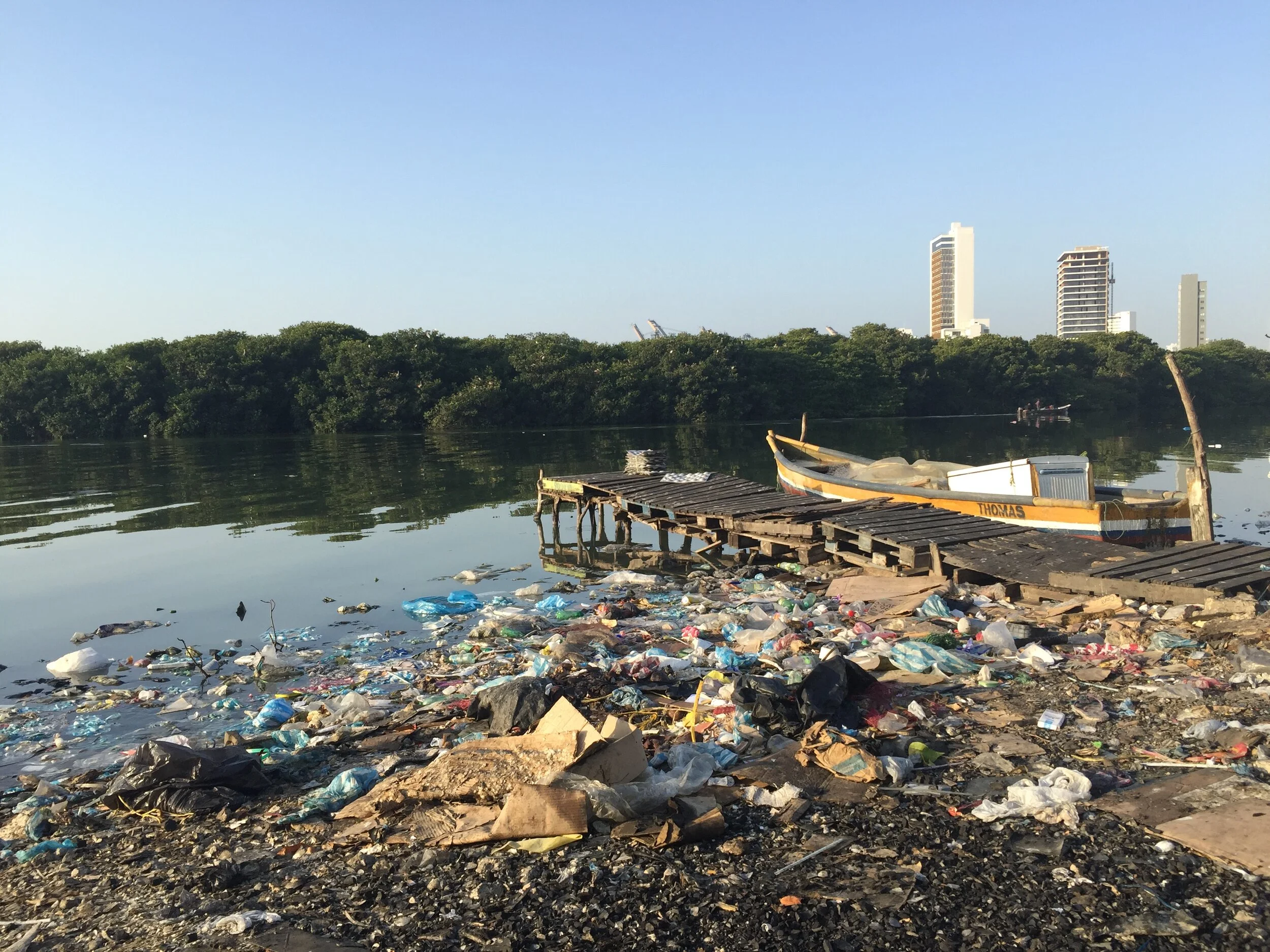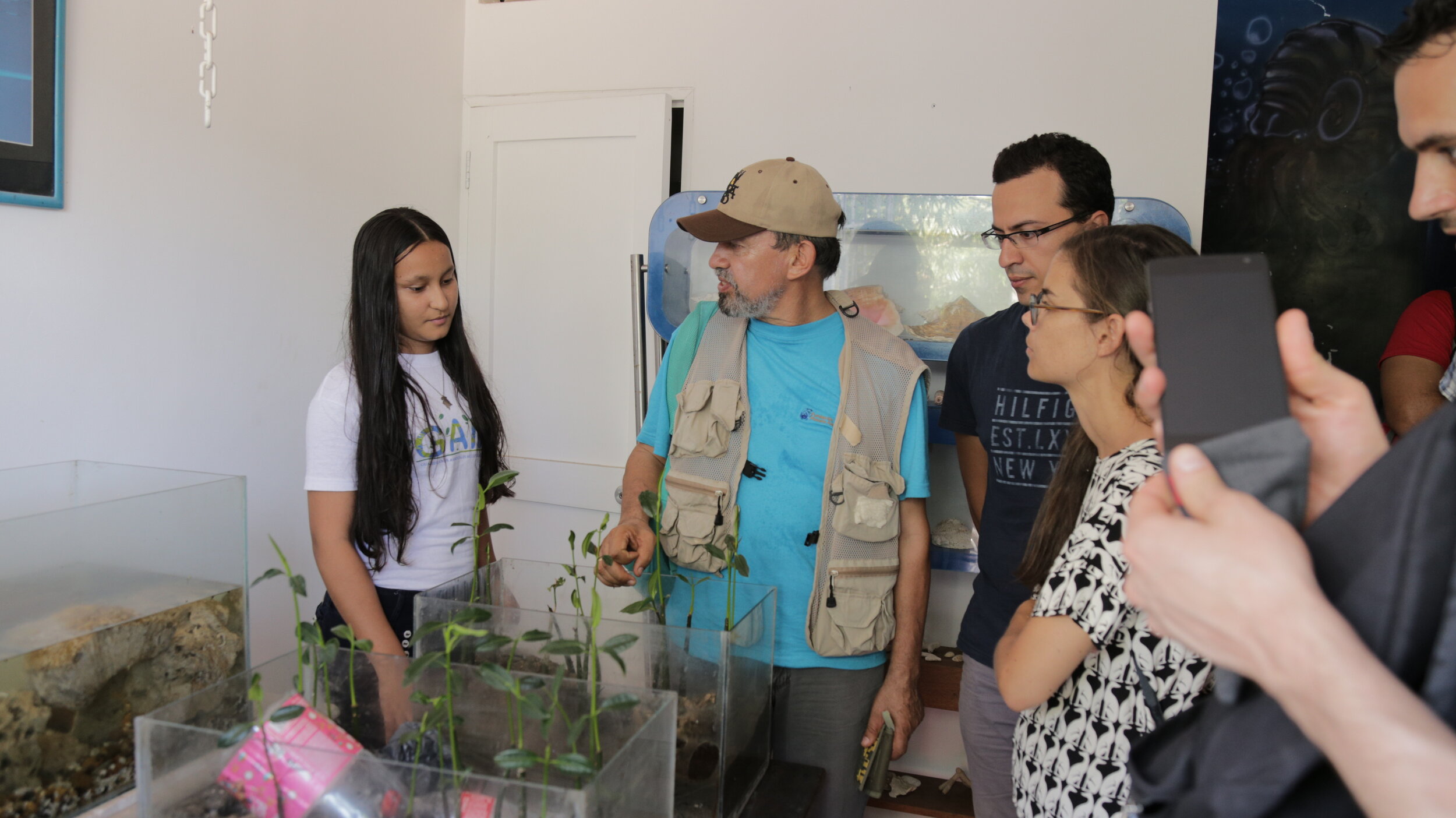Conserving Mangroves: A Community-Based Approach
Alexandria Gabb
This week marked the 7th annual international day for the conservation of mangroves. These coastal wetlands are some of the most unique and productive ecosystems in the world, providing food, livelihood opportunities and storm protection services to millions of people around the globe. They also play an integral part in the maintenance of both coral reefs and seagrass meadows and are incredibly effective carbon sinks, making them crucial players in the fight against climate change.
Despite the many benefits they provide, the loss of mangrove forests continues at an alarming rate. Estimates suggest that over 50% of global mangrove cover has been lost in the last 50 years, threatened by overexploitation and cleared in favour of aquaculture ponds, agricultural land and urban developments.
Thankfully, these losses have not gone unnoticed and calls for the proper conservation of mangroves have prompted vital discussions at the international level. Collaborative efforts such as the Global Mangrove Alliance, Blue Carbon Initiative and the Ramsar convention have helped mangroves garner the attention they deserve.
Collectively, these efforts have encouraged the inclusion in nature reserves, national parks and marine protected areas - with seemingly positive results. Protected areas in Indonesia for example have reduced mangrove loss by an impressive 28% and studies show that the yearly rate of global cover loss has dropped from 1-3% to 0.3-0.6%. While this news is encouraging, conservation biologists remain cautiously optimistic, warning that these results may not persist long-term.
“Some protected areas are doing a really good job at ensuring mangroves are able to thrive, but at the global scale many are under extreme pressures and aren’t providing the necessary protection” says Dr. Steven Canty, a marine biologist working for the Smithsonian Marine Station, and part of a pan-Smithsonian initiative, working land and seascapes.
Protected areas such as national parks, marine protected areas (MPAs) and nature reserves are all examples of conservation strategies that follow what is known as a ‘top-down’ approach. Typically, they involve the management of natural areas by governmental bodies who aim to reduce biodiversity loss and limit unsustainable behaviour by restricting people’s access to them.
While this approach has been shown to work in industrialised countries, the same cannot necessarily be said for everywhere. In many developing countries, a lot of people still depend on ecosystems like mangroves for crucial resources as they provide food, building materials, water, as well as livelihood opportunities. Within this context, a project that may be considered an ecological success, could also be a complete social failure.
Cartagena’s mangroves face ongoing encroachment by urban sprawl. Photo: Alexandria Gabb.
Or in other words, while these projects may work in rich and more developed countries, when people depend on local natural resources for their daily survival, you've set up something that works for nature but detriments some of the world’s most vulnerable people.
“[Protected areas] can have positive impacts on mangroves but can also have very negative implications for communities if they have restricted access to valuable resources which may be extractive or of cultural importance”, says Dr. Canty.
This can produce counterproductive results. “Compliance is generally a problem if communities haven’t been engaged in any of the management planning, and when people's livelihoods are affected without any form of compensation... there are going to be problems”. Restricting access to local communities can impact both their food and financial security – in turn creating conflict between managers and local people.
Without the cooperation of local people, the success of protected areas becomes dependent on funding, manpower and patrol capacity. Without these things people will continue to try and make use of resources as they had done before. This leads to the creation of what are known as paper parks – that is protected areas that exist on paper but not in practice.
An educational workshop by FUPAC, hosting games to highlight the interconnectivity between communities and nature. Photo: FUPAC.
In developing countries, many of which are in the tropics, conservation resources are scarce, meaning paper parks are a common occurrence. In his paper Canty describes that despite protection from national legislation, international agreements and 43 protected areas, mangrove cover in the Meso-American Reef (MAR) ecoregion declined by over 110,000ha in just 20 years.
With roughly 70% of mangroves forests occurring in tropical regions, conservationists have begun to look towards more bottom-up, holistic approaches to conservation: community-based mangrove management.
Community-based projects focus on stakeholder participation with the aim of creating solutions that work for both people and nature by empowering local communities to act as environmental stewards. Engaging local communities in management decisions offers benefits for both people and ecosystems. Canty explains, “Building capacity in communities to be able to monitor and evaluate management interventions means that less resources are required and when communities lead the management of their resources there is true ownership”.
Encouraging community participation also highlights the value of local knowledge. “People that interact with these systems day in day out, have not only first-hand knowledge of the resources, but often generations of knowledge, and therefore the inclusion of these stakeholders is paramount to the success”.
Community-led management is what Luís Fernando Sánchez, marine biologist and director of Fundación Planeta Azul Caribe (FPAC), is hoping to achieve for the mangroves in Cartagena, Colombia – in his project ‘Sailing through Cartagena'.
Best known for its historic walled city, colonial architecture and warm Caribbean beaches, the city of Cartagena’s ecological history has for the most part been forgotten. The pre-colonial terrain featured extensive coastal wetlands and ancient mangrove forests. Today, only small forest fragments remain, woven into the urban landscape of the inner-city area and struggling to survive as is the case with the mangroves of the Juan Angola canal.
Mangroves near Cartagena’s local market are heavily polluted with physical waste and contaminants. Photo: Alexandria Gabb.
Located at the north of the city, the Juan Angola canal borders 7 different neighbourhoods, connecting two of Cartagena’s largest bodies of water. Despite being just a few meters wide at points, the canal and its fringing mangroves harbour a surprising diversity of life, providing shelter to migratory birds and offering nursery habitat for commercially important fish that support local fishermen.
Sadly, both the canal and the neighbourhoods of its banks have been neglected by the government. The dumping of rubbish by locals, illegal landfills, and improper wastewater disposal by private companies have caused the canal to become severely polluted and sedimentation caused by the expansion of the city airport means that flooding of the canal has become a regular occurrence.
These issues have taken a huge toll on the health of the ecosystem and present major sanitation risks for the local people. To make matters worse, the environmental problems have given way to social issues. The pollution has discouraged residents from using their public spaces, encouraging an increase in crime and anti-social behaviour.
When asked about action by local government, Sánchez says, “There have been many well-intentioned government programs and officials with good direction, but they are only ever around short-term”. He explains that Cartagena and Colombia have suffered serious political instability in recent years. In just 20 years, the city has been governed by a record of 13 different mayors – more than double the number that would be expected. “We should not depend on them, especially in the beginning [of a project]. Being dependent on government action risks introducing issues of corruption, distrust from the people and leaves the conversations projects vulnerable to being discontinued with changes in political power”.
Instead, Sánchez sought to try an alternative approach – shifting power to the people. “I was looking for how to solve the problems that our people have in the face of our governance crisis and EUREKA!”. Following FUPACs ‘triad’ (TRIADA) model he is working to unite 3 groups of community actors: community members, trans-disciplinary professionals and local business owners. “By uniting these groups to work together and build each other up we can create the necessary force to face the failings and weaknesses of the government. Together we can not only restore the ecosystem but also generate sustainable livelihood opportunities and shared culture around doing so”.
FUPACs approach addresses the canal's degradation from 3 angles: education, entrepreneurship and participatory planning. Tackling education first, they hosted education events and established an environmental youth group known as GAM. GAM, short for Gestores Ambientales Multiplicadores, translates as ‘Environmental Custodian Multipliers’. The group has been instrumental in the project’s progression, providing a space for local children to explore the value of nature and learn new, more sustainable waste management practices for use at home. They then work to spread or ‘multiply’ what they had learned throughout their communities – teaching their friends and families to do the same.
Part of their educational campaign has involved the construction of travelling aquariums, curated with the help of the fisherman that work in the mangroves. These are now showcased by GAM around the city as a means of educating citizens on the benefits of mangroves and other marine systems.
With GAM successfully established, FUPACs focus has shifted to the entrepreneurial stage of the plan. By uniting local small-business owners, Sanchez is working to encourage better waste management by local vendors and generate sustainable job opportunities geared toward local eco-tourism.
After curating a sense of community and shared responsibility between local participants, FUPAC plans to move toward participatory planning. This will involve engaging locals in discussions about objectives for the area and developing a community-led action plan and facilitating discussions with local government bodies to address the management that is lacking.
GAM volunteers showcasing a mangrove nursery curated by FUPAC and local fishermen. Photo: FUPAC.
Though still in relatively early stages, the project has already seen some encouraging results. “With little investment we have managed to educate small groups of people that are in turn spreading that information through the community, via their friends, family and neighbours – we teach 20 children, and a 100 more people will learn”. Once tried, tested and perfected, Sanchez plans to apply his TRIADA model to additional mangrove forests along Colombia’s Caribbean coast as well as other ecosystems.
Feeling inspired? Want to support FUPAC in their efforts to conserve Cartagena’s mangroves? Read more on their website!
Interested to read about what the Smithsonian and Dr. Steven Canty’s are doing for mangrove communities in the MAR ecoregion? Check out their website.




